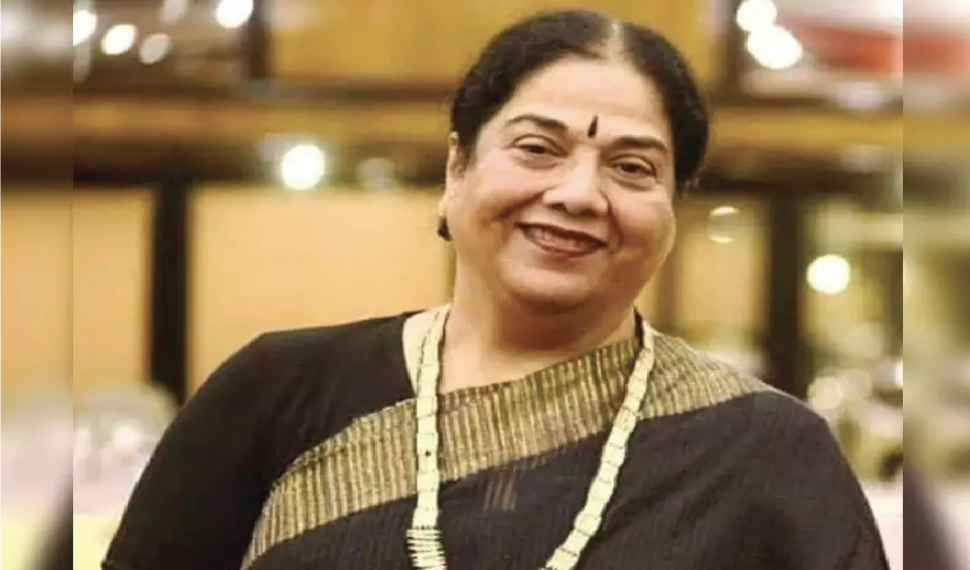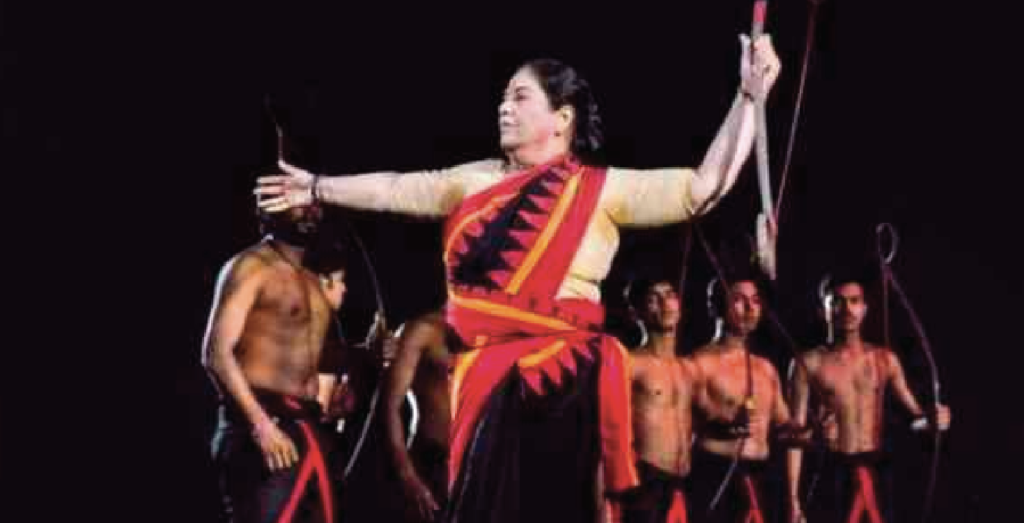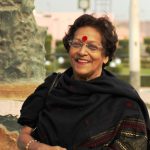It is difficult to pen a posthumous tribute to a celebrity who also became a close friend over the years. Usha Ganguly’s passing on April 23 last year was a personal shock as I had spoken to her over the phone just around four days before when Kolkata was in lockdown and she had no servants, lived alone and had to do all the housework herself. Her son invited her to stay with them and she did. But the independent woman that she was, she chose to come back to her own nest even when her body said “no” in so many different ways.
Fiercely independent, single, innovative, dynamic and forever committed to theatre not only as a performing art but also to make a political statement and a tool of social agency, she founded – 45 years ago – Rangakarmee, the only Hindi theatre group in Kolkata . Her plays reveal how creative, committed and talented she was though theatre was not in her genes. She was born in Rajasthan and her mother-tongue was Hindi. She came to Kolkata as a child but over time she became more “Bengali” than many born Bengalis. Her sole aim was to spread Hindi theatre across the country and beyond.
When I first saw her perform an extract from Rudali, in Hindi, adapted from Mahasweta Devi’s short story of the same name, I was mesmerised by the magic she created on-stage. That was just a seed to know more about this wonderful woman. Theatre, according to Usha Ganguly carries a socio-political context that keeps evolving in terms of form, content, subject. The topicality of the subjects it deals with is evident in every play it performs.
About one of her most outstanding plays Hum Mukhtara, Ganguly said, “My teacher Maitreyee Sengupta presented me as Mukhtar Mai (Pakistani woman who suffered the stigma of rape) . I stuck by the extraordinary courage shown by an ordinary girl from a remote village in Pakistan. Shocked to read that the accused had been acquitted, I decided to portray the life of this brave girl for the Indian audience.”

The first performance of Mukhtar Mai happened in Kolkata in January 2013 as the 37th anniversary of Rangakarmee. Its shows were then regularly staged in various cities. “I do not seek revenge, I am not cowed down by terror, all I seek is justice,” says Mukhtar again and again, echoing the angry voices of women anguished by the Nirbhaya gang-rape and killing.
Atmaj, the first full-fledged production of Rangakarmee within the Binodini- Keya Mancha Rangakarmee Studio Theatre was presented a couple of years ago to an invited audience. Atmaj which means “son” or, rather, “born of me” is no exception. Ganguly, who designed, directed and composed the music; used thick ropes to convey bondage, or freedom, waves of a river, trapping of a character. When Dr Nandini has labour pains, the girls around her gather some red-and-white ropes to use as a curtain to give her the privacy a mother demands at child-birth.
Antaryatra is a unique blend of the personal, the retrospective, literal and political. Ganguly used the strategy of the monologue to journey through a huge range of historic characters to portray the psyche of the woman and intertwines into this larger framework, snippets of her own life and experience as a woman who has chosen theatre as her way of life. In doing so — through the aesthetic and imaginative use of minimalistic props like colourful geometric shapes of the circle, the square, the triangle — she brings to life historic characters like Nora from Doll’s House, Sanichari from Rudaali, Himmat Mai (Mother Courage and her children) based on Bertolt Brecht’s famous play written in 1939, Kamla from Vijay Tendulkar’s play and so on.
Among the most outstanding productions was Kashinama. It is grand in scale but sustains its humble location – Benares – which offers a beautiful world in miniature brought alive on stage. The entire stage was converted into a ghat in Benares dotted with early morning wrestlers, local masseurs, dawn bathers, devotees who would not begin their day without first offering prayers to the Gods. On one side of the ghat lives a very poor family, a microcosm of most of the local residents who live a hand-to-mouth existence in the holiest city of India. All these fall together to form the vibrant backdrop against which Dr Kashinath Singh’s tale of “mutation” progresses. “It will not be possible for me to stage Kashinama again because it is impossible to gather together so many actors and technical team specially for the marathon rehearsals the play demands,” she said when I asked her why she did not perform the play these days any more.
Rangakarmee has done old plays, especially created plays, classical and contemporary plays to portray the socio-political scenario of sections of society we generally keep away from. Among its major productions over the past three decades are Mukti, Rudali, Court Martial, Kashinama and Holi. Bhor encapsulates a small, sad world of young drug addicts who lend each other their shoulders to weep on, fight and make-up, and try to love, hate, fight, struggle within this small world.
About Bhor, Usha said, “My constant interaction with the urban youth introduced me to the dark and dangerous world of addiction, addicts and rehab centres. I realised that this is kept away from the limelight because people do not feel easy talking about it. I personally visited rehab centres; spoke to the inmates and even to some of their parents. I learnt about drug addiction and the long and painful process that leads to rehabilitation. The parents did not even want to admit that their children were drug addicts. Bhor was born out of these.”
Usha Ganguly also conceived an annual woman’s theatre fest called Samanway 7 an event where theatre lovers got a drift of the theatre. Her team has decided to keep the Rangakarmee flag aloft. She lives on, in and through Rangakarmee.


 [/column]
[/column]